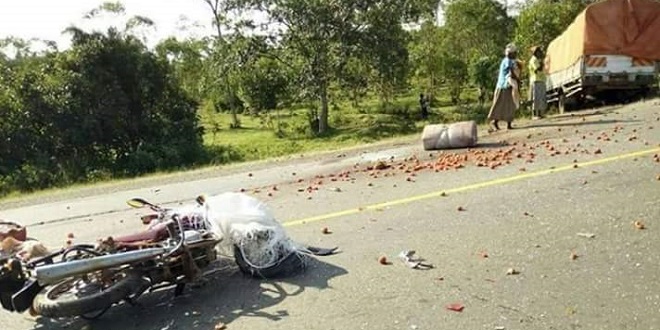
Roads deadlier than HIV/AIDS
Mwesige’s report came out at the same time the World Health Organisation released its report on road accidents around the world. The report notes that road injuries have now become the biggest killer of children and young adults (15-29) worldwide; higher than HIV/AIDS, tuberculosis or diarrheal diseases.
With a fatality rate of 27.4:100,000, Uganda is among the 20 worst performing countries around the world. The Global Road Safety Status report notes that up to 80,000 people perish in road accidents while thousands more end up lying in hospitals for months stretching the public health system and the economy.
According to the World Bank between 2014 and 2015, road traffic injuries were the fourth leading cause of deaths with more than 50% of those deaths occurring on accident spots.
The World Bank says close to 62% of the public health system resources are committed every year to handling referrals and surgeries that arise from road accidents. Over Shs 4 trillion is lost annually in road accidents and this human suffering and economic cost is unacceptable.
Antony Thompson, the Country Manager for the World Bank Group in Uganda, said experiences from across the world have shown that it is possible to adopt effective policies and interventions that greatly reduce traffic deaths and injuries and their effect on society.
“Uganda has made important strides in the past decade to reduce communicable diseases, maternal deaths and improve the overall life expectancy,” he said, adding that concerted action on road safety would bring additional far-reaching benefits for the public health sector, and economic development.
World Bank experts say reducing road traffic deaths by 10 % could raise per capita real GDP by 3.6% over 24 years. The study, “The High Toll of Traffic Injuries: Unacceptable and Preventable,” finds that countries that do not invest in road safety lose anywhere between 7-22% in potential per capita GDP growth over the same period, which underlines the importance of investing in road safety.
Mwesige says one of the challenges road designers are dealing in Uganda is the ever mushrooming illegal private property near the highways.
“You have sections where schools are built in a high speed section of the highway yet the schools have no perimeter fences and school children just run into the roads eventually getting knocked.”
Improving road user experience
In order to reduce the risks on the highway, Mwesige came up with several recommendations to improve the user experience on this road corridor.
Mwesige says a change in cross sections from two-lane to four-lanes with raised medians and guardrails would, for example, reduce accidents by between 11-15% and installing gates on rural sections approaching trading centres would reduce accidents by up to 75%.
He said flattening road sides in some sections of the highway would cut out accidents by 58% while delineation of horizontal curves with reflective chevron warning signs could reduce accidents by 25%. On the other hand, improving junctions with proper signage would cut out accidents by up to 30% especially if the junction is channelized with splitter islands and medians.
He said sections between Tororo and Mbale, Mbale and Soroti as well as Soroti and Lira should be dual-carriageways.
He said dealing with safety design on roads is similar to what doctors do to fight disease outbreaks; “they identify patterns and fix the anomalies”.
 The Independent Uganda: You get the Truth we Pay the Price
The Independent Uganda: You get the Truth we Pay the Price


